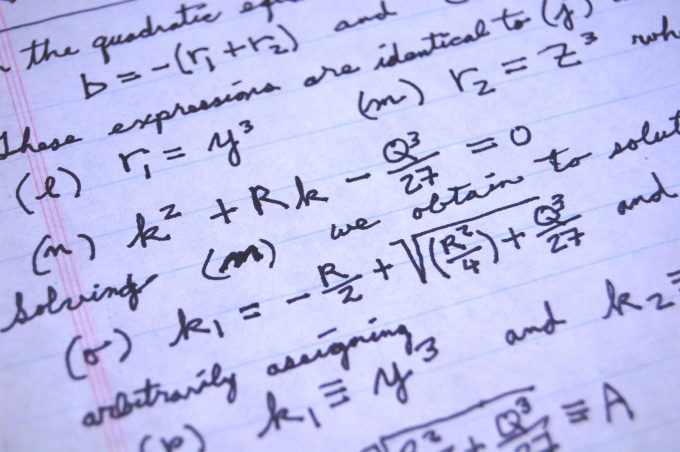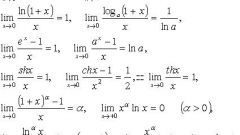You will need
- The ability to calculate limits of sequences.
Instruction
1
Determine the formula for a General member of a number. Suppose that we are given a series x1+x2+...+xn+..., its General member has the form xn. Use the characteristic Cauchy definition of convergence of a series. Calculate the limit lim((xn)^(1/n)) as n tends to ∞. Let it exist and equal L, then if L<1 then the series converges if L>1, the series diverges, and if L=1, it is necessary to explore a number on the convergence.
2
Consider the examples. Suppose that we are given a number 1/2+1/4+1/8+... total member number is represented as 1/(2^n). Find the limit lim((1/(2^n)^(1/n)) as n tends to ∞. This limit is equal to 1/2<1 and therefore the number of 1/2+1/4+1/8+... converges. Or, for example, suppose you have a number 1+16/9+216/64+.... Imagine the total member number in the formula (2×n/(n+1))^n. Calculate the limit lim(((2×n/(n+1))^n)^(1/n))=lim(2×n/(n+1)) as n tends to ∞. The limit is 2>1, i.e., the given series diverges.
3
Determine the convergence of the series on the basis of d'alembert. To do this, calculate the limit lim((xn+1)/xn) as n tends to ∞. If this limit exists and is equal to M<1, the series converges if M>1, the series diverges. If M=1, the series can be convergent and divergent.
4
Explore a few examples. Suppose that we are given a number Σ(2^n/n!). Calculate the limit lim((2^(n+1)/(n+1)!)×(n!/2^n))=lim(2/(n+1)) as n tends to ∞. It is equal to 0<1 and the given series is convergent. Suppose now given a number Σn!×(6/n)^n. Calculate the limit lim((n+1)!×6^(n+1)×n^n)/((n+1)^(n+1)×n!×6^n)=lim (6/(1+1/n)^n)=6/e>1 and so this series diverges.
5
Use the symptom Leibniz to image series provided that xn>x(n+1). Calculate the limit lim(xn) as n tends to ∞. If this limit is 0, then the series converges, its sum is positive and does not exceed the first member of the series. For example, suppose that we are given a number 1-1/2+1/3−1/4+.... Note that 1>1/2>1/3>...>1/n>.... The total member number would be 1/n. Calculate the limit lim(1/n) as n tends to ∞. It is equal to 0 and hence the series converges.
Note
The sign ^ denotes exponentiation.











